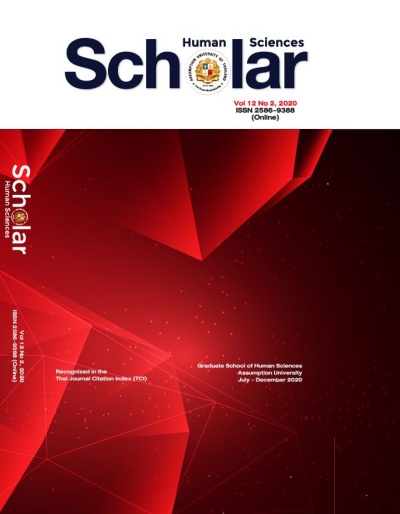Identifying Gaps and Priority Needs of Insructional Design for Safety Awareness Learning System for Undergraduate Students Majoring in Gems and Jewelry
Keywords:
Safety Awareness, Adaptive Learning, Procedural Simulation, 4C/ID, Instructional DesignAbstract
The gems and jewelry industry play a significant part in Thailand’s economic development. Yet, the concerns towards welfare and safety of the jewelry manufacturing workers have been neglected and remains unsolved. Reviews of literature suggest that developing the adaptive procedural simulated learning system based on four-component instructional design to promote safety awareness is an efficient approach to reduce safety risk. The learning system could be implemented to undergraduate studies to equip them with safety awareness before they enter the workforce. The purposes of this study were 1) to investigate the needs for developing safety awareness learning system, 2) to explore the students’ current and desirable state of perceived importance regarding instructional design and 3) to prioritize students’ needs and expectations to design a learning system that is motivating and interesting to them. Validated questionnaires were collected from 355 undergraduate students majoring in gems and jewelry in Thailand. The result shows that current state of student’s perceived importance of instructional design was at medium level (Mean = 2.96, SD = 0.69) while the desirable state was at the high level (Mean = 4.00, SD = 0.72). The gaps between the current and desirable state were further analyzed using PNImodified and revealed the top five priority needs for system design as followed: 1) ability to evaluate and analyze learner’s prior knowledge before each topic, 2) flexibility in arranging learning topics, 3) flexibility in selecting activities that achieve same outcome, 4) ability to adapt difficulties according to student’s needs, and 5) ability to demonstrate necessary operating skills.
References
Alessi, S. M. (2000). Simulation design for training and assessment. Aircrew training and assessment, 197-222.
Alessi, S. M., & Trollip, S. R. (2001). Multimedia for learning. Methods and development, 3.
Analoui, F. (1993). Training and transfer of learning: Avebury.
Burke, M. J., Sarpy, S. A., Smith-Crowe, K., Chan-Serafin, S., Salvador, R. O., & Islam, G. (2006). Relative effectiveness of worker safety and health training methods. American Journal of Public Health, 96(2), 315.
Gemological Institute of Thailand. (2014). Strategy and Action Plan for Thailand's Gems and Jewelry Development 2014-2017.
Guastello, S. J. (1993). Do we really know how well our occupational accidentprevention programs work? Safety Science, 16(3), 445-463.
Heinich, R., Molenda, M., Russell, J., & Smaldino, S. (2002). Instructional media and technologies for learning 7th edition. Merrill Prentice Hall.
Jevremović, M., & Vasić, Ž. (2010). Adaptive E-Learning. Acta facultatis medicae Naissensis, 27(4).
Murray, M. C., Pérez, J., Schmitt, U., Murphy, W. F., Murphy, S. S., Buettner, R. R., Johnston, K. A. (2015). Informing and Performing: A Study Comparing Adaptive Learning to Traditional Learning. Informing Science: the International Journal of an Emerging Transdiscipline, 18.
Nestel, D., Groom, J., Eikeland-Husebø, S., & O'Donnell, J. M. (2011). Simulation for learning and teaching procedural skills: the state of the science. Simulation in healthcare, 6(7), S10-S13.
Salden, R. J., Paas, F., & van Merriënboer, J. J. J. C. i. H. B. (2006). A comparison of approaches to learning task selection in the training of complex cognitive skills. 22(3), 321-333.
Sole, M., Musu, C., Boi, F., Giusto, D., & Popescu, V. (2013). RFID sensor network for workplace safety management. Paper presented at the Emerging Technologies & Factory Automation (ETFA), 2013 IEEE 18th Conference on.
Sonprom, B. (2012). Attitude of Construction Workers on Accidents in Construction Industry : A Case Study of SWT. Technology & Construction Co., Ltd. Suranaree University of Technology.
SSO. (2017). Worker's Compensation Fund Annual Report 2017.
Van Merriënboer, J. J., Clark, R. E., & De Croock, M. B. (2002). Blueprints for complex learning: The 4C/ID-model. Educational Technology Research and Development, 50(2), 39-61.
van Merriënboer, J. J., & Kirschner, P. A. (2018). 4C/ID in the Context of Instructional Design and the Learning Sciences. International Handbook of the Learning Sciences, 169.
Wongwanich, S. (2007). Needs assessment research.: Bangkok: Chulalongkorn University.
Yamane, T. (1973). Statistics: An Introduction Analysis. In: New York: Harper & Raw.
Zhao, D., & Lucas, J. (2014). Virtual reality simulation for construction safety promotion. International journal of injury control and safety promotion(ahead-of-print), 1-11.




